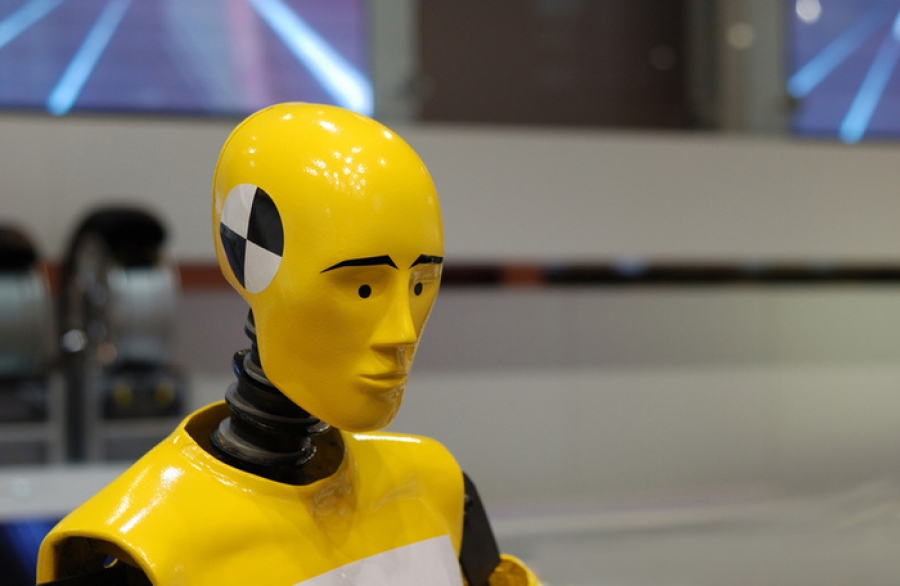Archive for September, 2012
A Fraternity of Team Players
 It’s easy to get caught up in what others think. (I fall into that trap myself.) And it’s often unclear when it happens. But what is clear: it’s not good for anyone.
It’s easy to get caught up in what others think. (I fall into that trap myself.) And it’s often unclear when it happens. But what is clear: it’s not good for anyone.
It’s hard to be authentic, especially with the Fraternity of Team Players running the show, because, as you know, to become a member their bylaws demand you take their secret oath:
I [state your name] do solemnly swear to agree with everyone, even if I think differently. And in the name of groupthink, I will bury my original ideas so we can all get along. And when stupid decisions are made, I will do my best to overlook fundamentals and go along for the ride. And if I cannot hold my tongue, I pledge to l leave the meeting lest I utter something that makes sense. And above all, in order to preserve our founding fathers’ externally-validated sense of self, I will feign ignorance and salute consensus.
It’s not okay that the fraternity requires you check your self at the door. We need to redefine what it means to be a team player. We need to rewrite the bylaws.
I want to propose a new oath:
I [state your name] do solemnly swear to think for myself at all costs. And I swear to respect the thoughts and feelings of others, and learn through disagreement. I pledge to explain myself clearly, and back up my thoughts with data. I pledge to stand up to the loudest voice and quiet it with rational, thoughtful discussion. I vow to bring my whole self to all that I do, and to give my unique perspective so we can better see things as they are. And above all, I vow to be true to myself.
Before you’re true to your company, be true to yourself. It’s best for you, and them.
Separation of church and state, yes; separation of team player and self, no.
Less-With-Far-Less for the Developing World
 The stalled world economy will make growth difficult, and companies are digging in for the long haul, getting ready to do more of what they do best – add more function and features, sell more into existing markets, and sell more to existing customers. More of the same, but better. But growth will not come easy with more-on-more thinking. It will be more-on-more trench warfare – ugly hand-to-hand combat with little ground gained. It’s time for another way. It’s time for less. It’s time to create new markets with less-with-far-less thinking.
The stalled world economy will make growth difficult, and companies are digging in for the long haul, getting ready to do more of what they do best – add more function and features, sell more into existing markets, and sell more to existing customers. More of the same, but better. But growth will not come easy with more-on-more thinking. It will be more-on-more trench warfare – ugly hand-to-hand combat with little ground gained. It’s time for another way. It’s time for less. It’s time to create new markets with less-with-far-less thinking.
Real growth will come from markets and consumers that don’t exist. Real (and big) growth will come from the developing world. They’re not buying now, but they will. They will when product are developed that fit them. But here’s the kicker – products for the developed world cannot be twisted and tweaked to fit. Your products must be re-imagined.
The fundamentals are different in the developing world. Three important ones are – ability to pay, population density, and literacy/skill.
The most important fundamental is the developing world’s ability to pay. They will buy, but to buy products must cost 10 to 100 times less. (No typo here – 10 to 100 times less.) Traditional cost reduction approaches such as Design for Manufacturing and Assembly (DFMA) won’t cut it – their 50% cost reductions are not even close. Reinvention is needed; radical innovation is needed; fundamental innovation is needed. Less-with-far-less thinking is needed.
To achieve 10-100X cost reductions, the product must do less and do it far more efficiency (with far less). Product functionality must be decimated – ripped off the bone until only bone remains. The product must do only one thing. Not two – one. The product must be stripped to its essence, and new technology must be developed to radically improve efficiency of delivering its essence. Products for the developing world will require higher levels of technology than products for the developed world.
Radical narrowing of functionality will make viable the smaller, immature, more efficient technologies. Infant technologies usually have lower output and less breadth, but that’s just what’s needed – narrow, deep, and less. Less-with-far-less.
In the developing world, population density is low. People are spread out, and rural is the norm. And it’s not developed world rural, it’s three-day-hike rural. In the developing world, people don’t go to products; products go to people. If it’s not portable, it won’t sell. And developing world portable does not mean wheels – it means backpack. Your products must fit in a backpack and must be light enough to carry in one.
Big, stationary, expensive equipment is not exempt. It also must fit in a backpack. And this cannot be achieved with twist-and-bend engineering. To fit in a backpack, the product must be stripped naked and new technology must be developed to radically improve efficiency. This requires radical narrowing, radical reimagining, and radical innovation. It requires less-with-far-less thinking. (And if it doesn’t run on batteries, it should at least have battery backup to deal with rolling blackouts.)
People in the developing world are intelligent, but most cannot read well and have little experience with developed world products. Where the developed world’s solution is picture-based installation instructions, less-with-far-less products for the developing world demand no instructions. For the developing world, the instruction manual is the on button. And this requires serious technology – software algorithms fed by low cost sensors. And the only way it’s possible is by distilling the product to its essence. Algorithms, yes, but algorithms to do only one thing very well. Less-with-far-less.
The developed world makes products with output that requires judgment – multi-colored graphical output that lets the user decide if things went well. Products for the developing world must have binary output – red/green, beep/no-beep. Less-with-far-less. But again, this seemingly lower-level functionality (a green light versus a digital display) actually requires more technology. The product must interpret results and decide if it’s good – much harder than a sexy graphical output that requires interpretation and judgement.
Creating products for the developing world requires different thinking. Instead of adding more functions and features, it’s about creating new technologies that do one thing very well (and nothing more) and do it with super efficiency. Products for the developing world require higher technologies than those for the developed world. And done well, the developed world will buy them. But the crazy thing is, the less-with-far-less products that will be a hit in the developing world will boomerang back and be an even bigger hit in the developed world.
You might be a superhero if…
- Using just dirt, rocks, and sticks, you can bring to life a product that makes life better for society.
- Using just your mind, you can radically simplify the factory by changing the product itself.
- Using your analytical skills, you can increase product function in ways that reinvent your industry.
- Using your knowledge of physics, you can solve a longstanding manufacturing problem by making a product insensitive to variation.
- Using your knowledge of Design for Manufacturing and Assembly, you can reduce product cost by 50%.
- Using your knowledge of materials, you can eliminate a fundamental factory bottleneck by changing what the product is made from.
- Using your curiosity and creativity, you can invent and commercialize a product that creates a new industry.
- Using your superpowers, you think you can fix a country’s economy one company at a time.
How To Accelerate Engineers Into Social Media
 Engineers fear social media, but shouldn’t. Our fear comes from lack of knowledge around information flow. Because we don’t understand how information flow works, we stay away. But our fear is misplaced – with social media information flow is controllable.
Engineers fear social media, but shouldn’t. Our fear comes from lack of knowledge around information flow. Because we don’t understand how information flow works, we stay away. But our fear is misplaced – with social media information flow is controllable.
For engineers, one-way communication is the best way to start. Engineers should turn on the information tap and let information flow to them. Let the learning begin.
At first, stay away from FaceBook – it’s the most social (non-work feel), least structured, and most difficult to understand – at least to me.
To start, I suggest LinkedIn – it’s the least social (most work-like) and highly controllable. It’s simple to start – create an account, populate your “resume stuff” (as little as you like) and add some connections (people you know and trust). You now have a professional network who can see your resume stuff and they can see yours. But no one else can, unless you let them. Now the fun part – find and join a working group in your interest area. A working group is group of like-minded people who create work-related discussions on a specific topic. Mine is called Systematic DFMA Deployment. You can search for a group, join (some require permission from the organizer), and start reading the discussions. The focused nature of the groups is comforting and you can read discussions without sharing any personal information. To start two-way communication, you can comment on a discussion.
After LinkedIn, engineers should try Twitter. Tweets (sounds funny, doesn’t it?) are sentences (text only) that are limited to 140 characters. With Twitter, one-way communication is the way to start – no need to share information. Just create an account and you’re ready to learn. With LinkedIn it’s about working groups, and with Twitter it’s about hashtags (#). Hashtags create focus with Twitter and make it searchable. For example, if the tweet creator uses #DFMA in the sentences, you can find it. Search for #DFMA and you’ll find tweets (sub-140 character sentences) related to design for manufacturing and assembly. When you find a hashtag of interest, monitor those tweets. (You can automate hashtag searches – HootSuite – but that’s for later). And when you find someone who consistently creates great content, you can follow them. Once followed, all their tweets are sent to your Twitter account (Twitter feed). To start two-way communication you can retweet (resend a tweet you like), send a direct message to someone (like a short email), or create your own tweet.
Twitter’s format comforts me – short, dense bursts of sentences and no more. Long tweets are not possible. But a tweet can contain a link to a website which points to a specific page on the web. To me it’s a great combination – short sentences that precisely point to the web.
With engineers and social media, the goal is to converge on collaboration. Ultimately, engineers move from one-way communication to two-way communication, and then to collaboration. Collaboration on LinkedIn and Twitter allows engineers to learn from (and interact with) the world’s best subject matter experts. Let me say that again – with LinkedIn and Twitter, engineers get the latest technical data, analyses, and tools from the best people in the world. And it’s all for free.
For engineers, social and media are the wrong words. For engineers, the right words are – controlled, focused, work-related information flow. And when engineers get comfortable with information flow, they’ll converge on collaboration. And with collaboration, engineers will learn from each other, help each other, innovate and, even, create personal relationships with each other.
Companies still look at social media as a waste of work time, and that’s especially true when it comes to their engineers. But that’s old thinking. More bluntly, that’s dangerous thinking. When their engineers use social media, companies will develop better products and technologies and commercialize them faster.
Plain and simple, companies that accelerate their engineers into social media will win.

 Mike Shipulski
Mike Shipulski